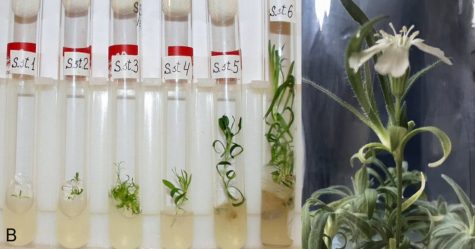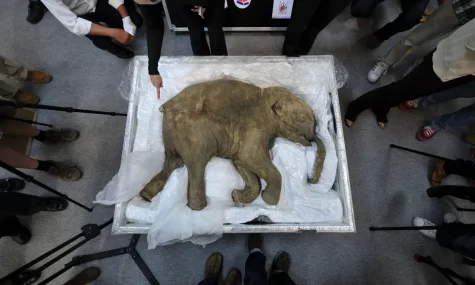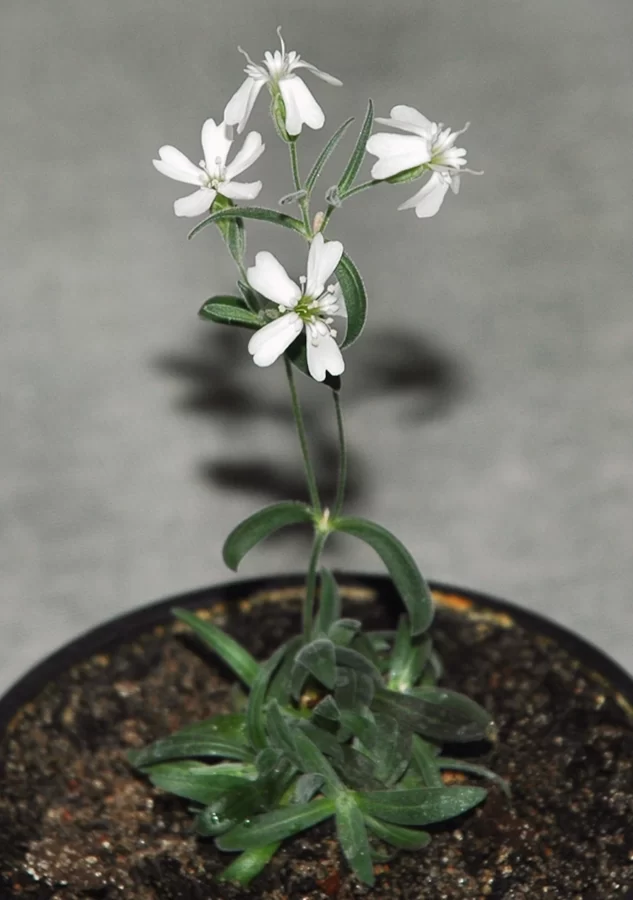Back from the Dead: The Story of a Flower
January 17, 2023
In 2012, a group of Russian scientists achieved what was previously believed impossible, bringing a living thing back from extinction. Although it wasn’t a mammoth or T-Rex, it was still a feat of modern science: a 32,000-year-old Siberian flower. The oldest plant on Earth.
Silene stenophylla, pictured above, has modern relatives living in Siberia, yet these seeds came from 124 feet below the ground, in an Ice Age squirrel’s food cache. The seeds had been perfectly preserved entirely in ice, with some tissue within several immature specimens still viable. Some of the others had been killed by 32,000-year-old damage, which was presumed to have been done by the squirrel to prevent them from germinating within the burrow. Scientists were able to remove this viable tissue once thawed and germinate the seeds. As seen below, this tissue was used to grow the oldest plants in the world, successfully enough to produce new seeds of their own.

Viable seed tissue is grown into adult plants in a laboratory.
So, what is so important about an old plant? Well, this plant is the first successful attempt at artificial de-extinction. This is a process in which a species is brought back from extinction through artificial means. De-extinction has occurred naturally, as seen by the return of the black-footed ferret, a species that reappeared years after having been believed extinct. Yet, this has never occurred to the extent of the sheer age of the Silene stenophylla; thus, this is seen as the first hope of reviving other Pleistocene age species from extinction. In addition, it is important to remember that it is thanks to the hundreds of feet of ice within the Siberian arctic that any viable tissue survived.
With that in mind, this successful thawing of tissue that was frozen for 32,000 years may be the evidence to show how freezing seeds or other genetic material may keep them from deteriorating for extended periods. This may help in supporting the plan of a seed vault in Greenland. Additionally, this brings hope for the possible resurrection of other genetic material that has been discovered in the Siberian permafrost, such as that of wooly mammoths.

An extremely well-preserved baby mammoth was found in Russia in 2007.
You may be wondering, could this lead to the resurrection of wooly mammoths? If so, what would this look like in our modern world? How could this even be feasible? Well, look no further; my last article, “Jurassic Park…of Mammoths?”, introduces how this may be more plausible today than previously thought.
Silene stenophylla, a 32,000-year-old flower, is the first species to be artificially brought back from extinction, a major feat in genetic science. This achievement may also be the key to preserving seeds and other genetic material from today, possibly for thousands upon thousands of years. In addition, it may be the spark that ignites the fire of de-extinction and Pleistocene rewilding on Earth.





